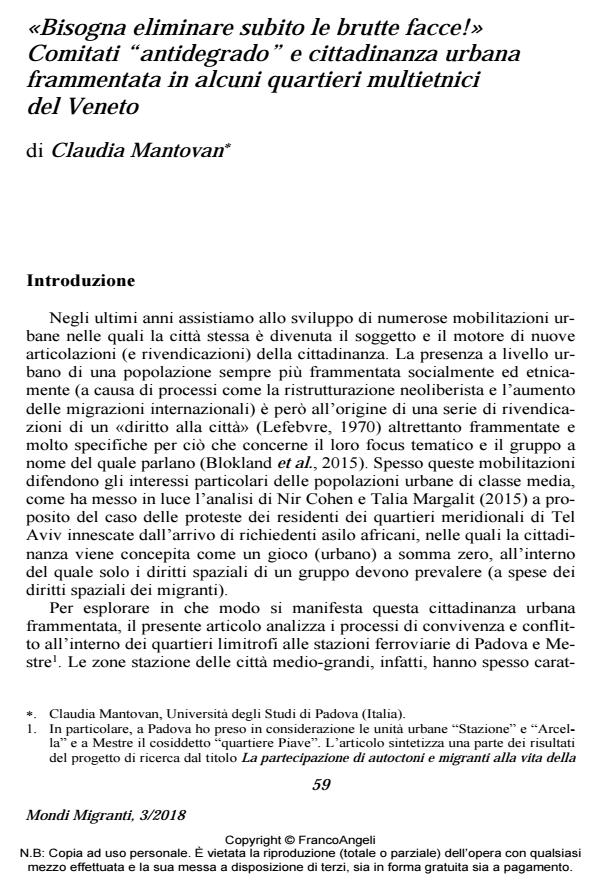«The bad faces must be eliminated immediately!» "Anti-urban decay" com-mittees and fragmented urban citizenship in some multiethnic neighborhoods of the Veneto Region (Italy)
Journal title MONDI MIGRANTI
Author/s Claudia Mantovan
Publishing Year 2018 Issue 2018/3
Language Italian Pages 19 P. 59-77 File size 189 KB
DOI 10.3280/MM2018-003004
DOI is like a bar code for intellectual property: to have more infomation
click here
Below, you can see the article first page
If you want to buy this article in PDF format, you can do it, following the instructions to buy download credits

FrancoAngeli is member of Publishers International Linking Association, Inc (PILA), a not-for-profit association which run the CrossRef service enabling links to and from online scholarly content.
The presence of an increasingly socially and ethnically fragmented population at the urban level is at the origin of a series of claims for a "right to the city" as much fragmented and strikingly specific regarding their thematic focus and the groups they speak for. To explore how this fragmented urban citizenship manifests itself, this article analyzes the processes of coexistence and conflict within the neighborhoods near the railway stations of Padua and Mestre. From the methodo-logical point of view, the analysis adopted a "multilevel" approach, taking into ac-count the global and national economic and political dynamics that, interacting with local ones, contribute to generating the social processes analyzed in the con-sidered neighborhoods. Furthermore, in studying urban citizenship, an agency-centered approach has been adopted, conceiving it as a controversial process of space making and space claiming.
Keywords: Multiethnic neighborhoods, urban citizenship, citizens’ committees, symbolic boundaries, social boundaries, Veneto
- Traiettorie di apprendimento e pratiche di multi-culturalizzazione in un quartiere multietnico Martina Capaccioli, in EDUCATIONAL REFLECTIVE PRACTICES 1/2024 pp.274
DOI: 10.3280/erp1-2024oa18455
Claudia Mantovan, «Bisogna eliminare subito le brutte facce!» Comitati "antidegrado" e cittadinanza urbana frammentata in alcuni quartieri multietnici del Veneto in "MONDI MIGRANTI" 3/2018, pp 59-77, DOI: 10.3280/MM2018-003004